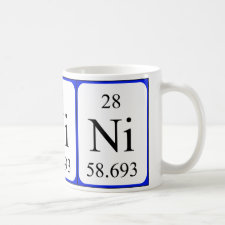
Authors: Zuo X, Mosha D, Archibald SJ, McCasland AK, Hassan AM, Givens RS, Busch DH
Article Title: Toward the soil poultice and a new separations methodology: Rebinding of macrocyclic metal complexes to molecularly imprinted polymers specifically templated via noncovalent interactions.
Publication date: 2005
Journal: Journal of Coordination Chemistry
Volume: 58
Issue: (1)
Page numbers: 21-39.
DOI: 10.1080/00958970512331327357
Alternative URL: http://www.informaworld.com/10.1080/00958970512331327357
Abstract: The siderophore-based extraction of iron from the soil by bacteria is proposed as a model for a new separation methodology labeled the soil poultice, a molecular device that would selectively retrieve the complex of a targeted metal ion. In this first feasibility study we describe the synthesis and characterization of molecularly imprinted polymers based on noncovalent interactions, and their application in the specific recognition of macrocyclic metal complexes. The imprinting by salts of {N, N', N'', N'''-tetra(2-cyanoethyl)cyclam}nickel(II) and {N, N', N'', N'"-tetra(2-carbamoylethyl)cyclam}nickel(II) involves multiple hydrogen-bonding interactions when combined during copolymerization with the functional monomer acrylamide or with the crosslinking monomer N,N'-ethylenebisacrylamide. Good rebinding capacity for the imprinting metal complex was observed in both acetonitrile and water. Parallel experiments using the vinylsulfonate salt of either nickel(II) complex adds electrostatic interactions, and use of good coordinating groups as functional monomers (e.g. vinyl pyridines) adds a minor ligand component. Imprinted polymers using pairs of interactions (hydrogen bonding plus electrostatic attractions or hydrogen bonding plus minor ligand binding) exhibit greatly increased rebinding abilities, revealing a most promising synergism between pairs of supramolecular modes of attraction. Furthermore, imprinting the polymers with the beta isomer of {N, N', N'', N'''-tetra(2-carbamoylethyl)cyclam}nickel(II) perchlorate led to a marked preference for reuptake of the beta isomer, exemplifying a substantial stereoselectivity. The reuptake of the beta isomer was eight times that of the a isomer. The polymers are resistant to strong acids and oxidizing agents and show an increase in rebinding capacity during cycles of reuse. The affinities of the same ligands were determined for a number of metal ions, revealing high degrees of selectivity for Hg(II) and Cu(II). The imprinting procedure, combined with the accompanying selective chelation by macrocyclic ligands, supports the possibility of a new methodology for efficient extraction of metal ions under conditions not necessarily amenable to conventional techniques
Template and target information: nickel ion, Ni(II)
Author keywords: soil poultice, Molecularly imprinted polymers, noncovalent interactions, macrocyclic metal complexes



Join the Society for Molecular Imprinting

New items RSS feed
Sign-up for e-mail updates:
Choose between receiving an occasional newsletter or more frequent e-mail alerts.
Click here to go to the sign-up page.
Is your name elemental or peptidic? Enter your name and find out by clicking either of the buttons below!
Other products you may like:
 MIPdatabase
MIPdatabase









